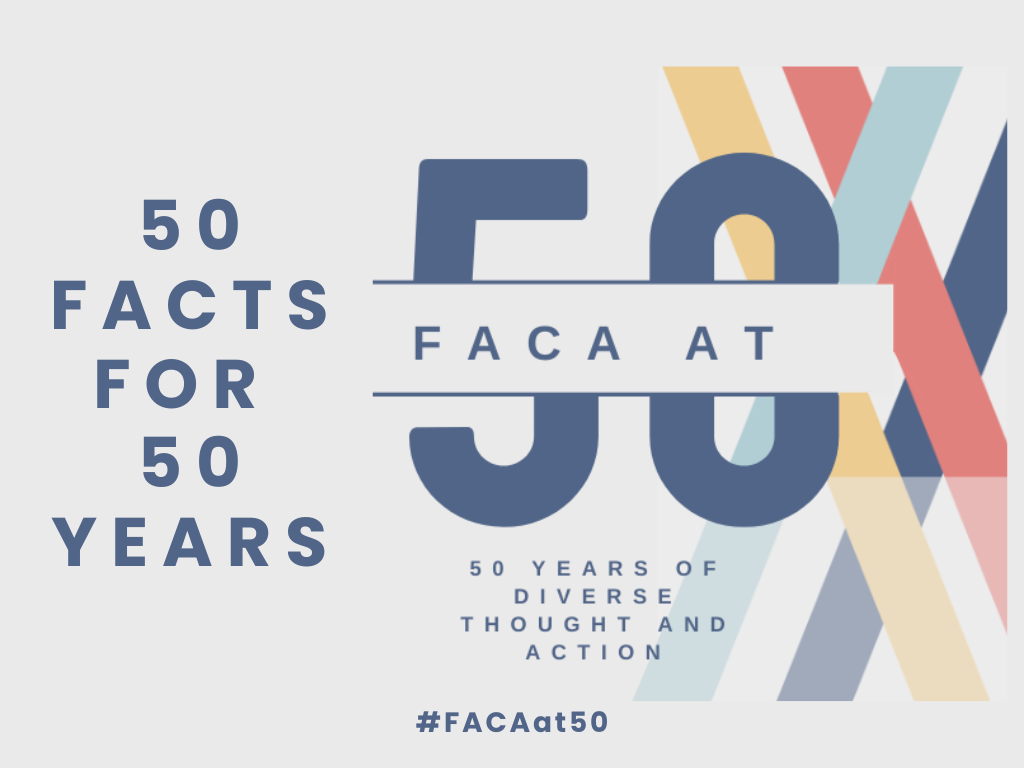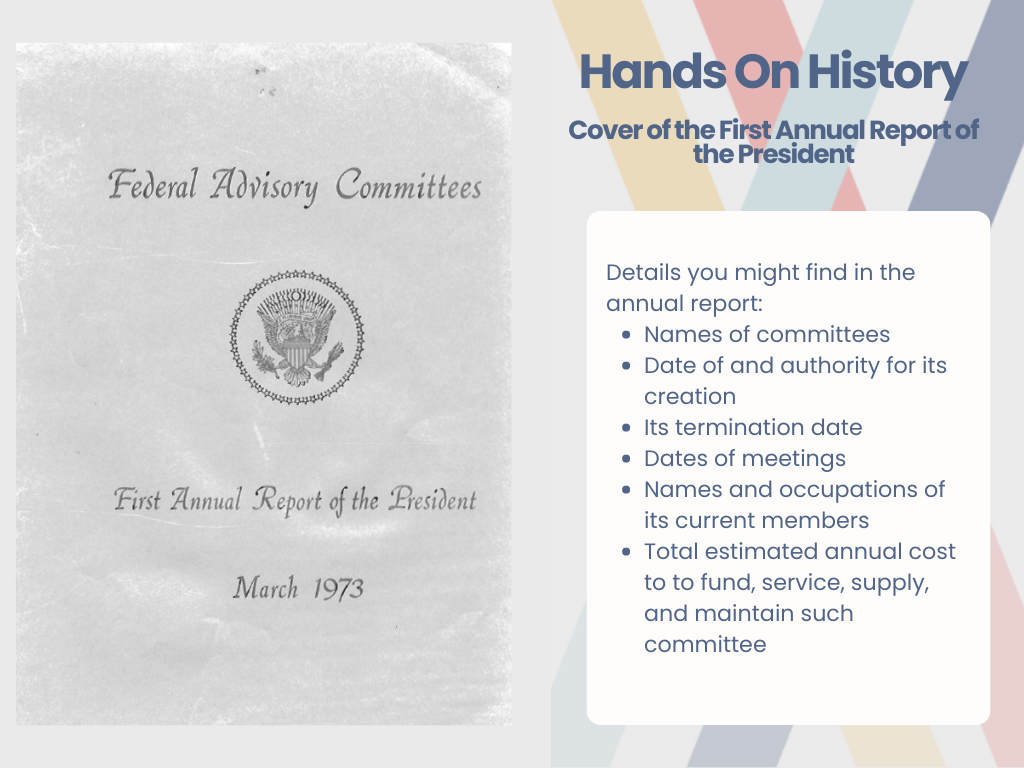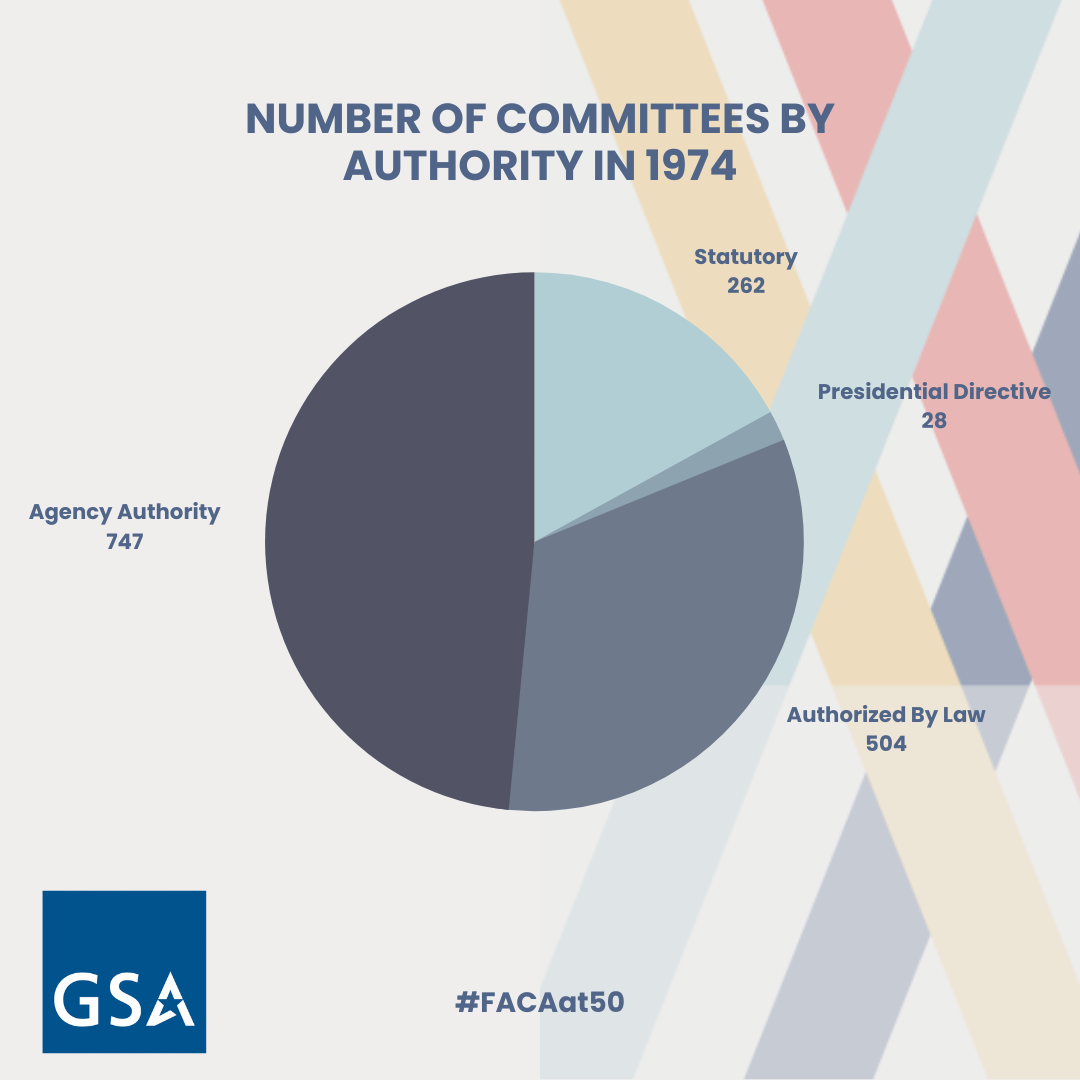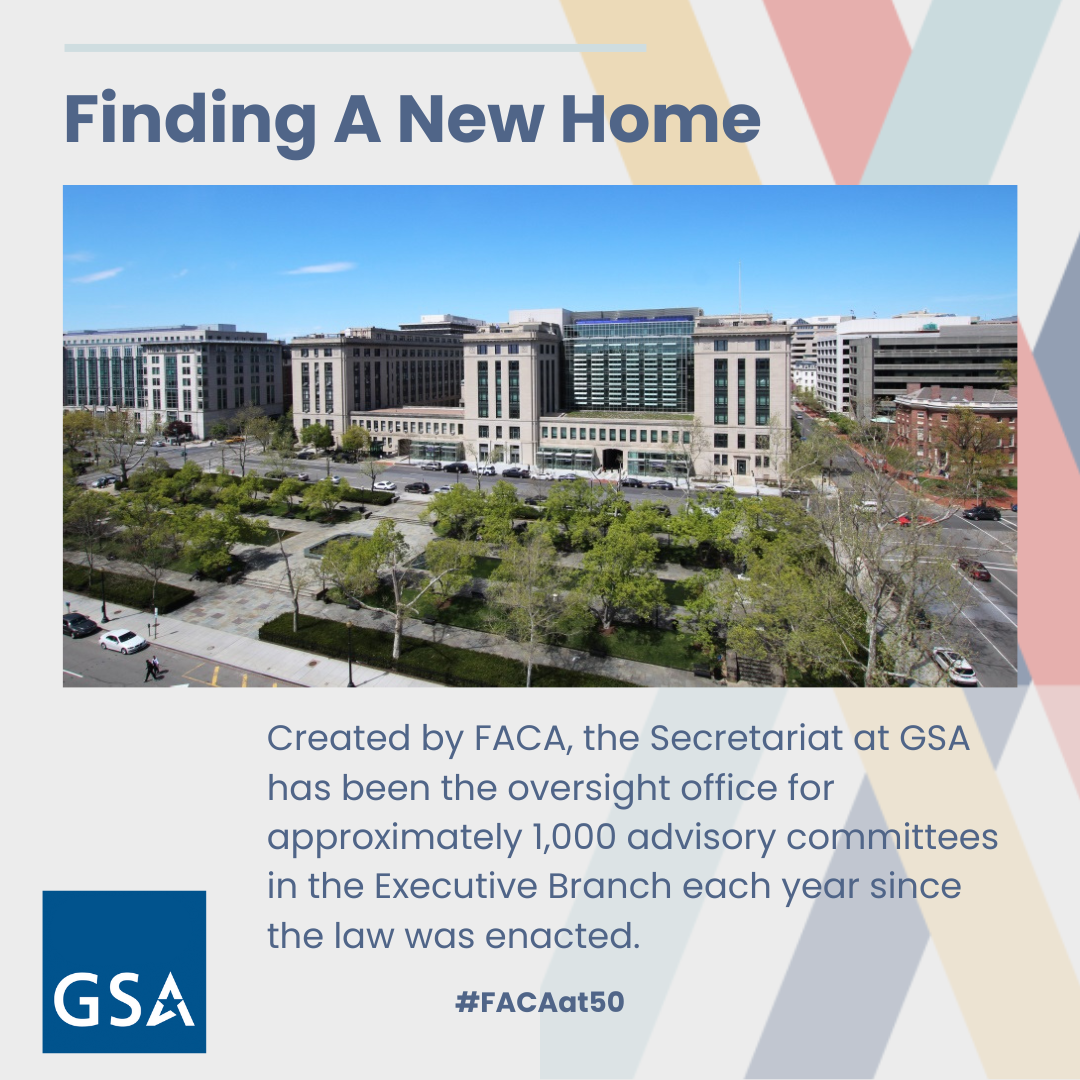
50 Facts for 50 Years: Bringing in Sunlight and Transparency
Post filed in: FACA
This month we are celebrating the 50th anniversary of the Federal Advisory Committee Act. To learn more about FACA and help celebrate 50 years of diverse thought and action, this blog series will reveal 50 facts for 50 years. If you missed the first set of facts check them out, then come back and read 13 through 22 focused on FACA’s early history and increasing transparency and openness in the program:
13. After the passage of FACA, the initial focus was on identifying and chartering existing advisory committees, collecting data on the numbers and costs associated with their operation, and finding ways to manage them and their associated costs and ensure they were necessary.
14. The new transparency law required the President to report annually to Congress and the public. Data collected for the first annual report of advisory committees in 1973 totalled approximately 6,000 pages. For the average reader, that would take one whole week of non-stop reading to get through!

15. From 1972 to 1998, manually compiled annual reports summarized the highlights of the FACA program but today they have been digitized. You can read them here, scroll down to the last item entitled: 1972-1998: The Annual Report of the President on Federal Advisory Committees.
16. As early as 1974 there was an effort to provide Congress and the public more information regarding federal advisory committees by expanding data collection to include the type of committees and number of meetings. For the first time the public could see who in government was establishing committees.
17. Federal advisory committees can only be created by Congress (either required or authorized by statute), the President (through Presidential Directives such as Executive Orders), or by agency heads. The number of committees they created in 1974 was:

18. In December 1977, Executive Order 12024 delegated all responsibilities of the President for implementing FACA (except transmitting the annual report to Congress) to the Administrator of the General Services Administration. This resulted in the transfer of the Committee Management Secretariat to GSA. If you were wondering why we were leading the FACA@50 celebration, this is why!

19. FACA annual reporting was on a calendar year basis until 1983 when legislation changed the reporting period to coincide with the fiscal year instead.
20. With a better defined FACA program in place, the focus turned increasingly to enhancing the executive branch management of federal advisory committees, including automation of the annual committee data collection within GSA, expanded training on FACA for agencies, interagency coordination and evaluation of FACA implementation practices, and additional FACA guidance.
21. There were multiple efforts by GSA to improve the consistency of cost reporting, automate and streamline membership records, collect data on member affiliation, simplify reporting procedures for agencies, and more easily track committees through time by assigning each committee a unique number. These changes led the way to make advisory committee program information available on both a current and historical basis.
22. Fuller cost reporting meant increasing transparency into the FACA program. It also made it more difficult to compare costs prior to 1984 with those reported after 1984.

 U.S. General Services Administration
U.S. General Services Administration
